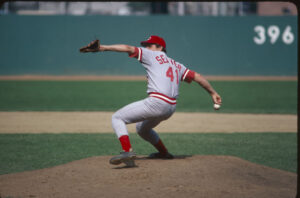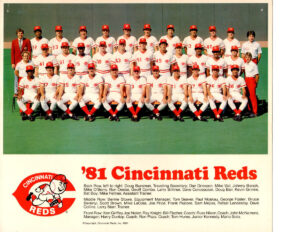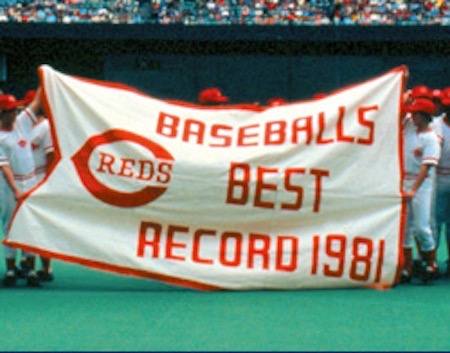In 1981, Major League Baseball suffered its worst stoppage yet, as all scheduled contests between June 12 and July 31, 1981 (a total of 713 games) were obliterated due to a disagreement between players and owners surrounding the hot topic of free agency. Owners longed for reparations for when they lose players to free agency, which the players execrated in unison, claiming that restitution in this case would be detrimental to free agency, as it would harm its mere worth. As the summer rolled on, the two sides, accustomed to quarrelling, came to an understanding, and play resumed.
However, the ’81 season wound up being as atypical of a year as they come. Rather than picking up where they left off from a standings perspective, the league decided to split the regular season in two halves, a controversial decision that plagued the integrity of the game. With the strike playing out during the heart of the season, Commissioner Kuhn, along with American League President Lee MacPhil and National League President Chub Feeney, announced that the intruded-upon year would be observed as two separate seasons: first half and second half. Those who ended the initial half on top of their division prior to the strike would be guaranteed a playoff spot, while the second-half winners would occupy the remaining bids. Should a team have finished atop their division in both halves, which didn’t play out, then they would have received a home-field advantage incentive come playoff time.
From a logical perspective, this provisional playoff structure comes with many defects. Number one, the Yankees, Athletics, Phillies, and Dodgers, the four teams who won their individual divisions in the first half, had no incentive to continue pushing hard in the latter half, as they were already promised a spot in the postseason. Second, and most crippling, by fashioning the playoff format as such, MLB opened up the possibility for a team to finish the year with the best record in baseball but, due to the abnormal arrangement, could miss out on the playoffs if they were somehow unable to win their division in either the first or second half.
As luck would have it, both the Cincinnati Reds and St. Louis Cardinals got the short end of the stick. Both teams, over the course of the entirety of the season, finished with the best records in the National League, but since they were each runner-up in their respective sectors, missed out on the playoffs. As expected, this news didn’t sit well with either ball club, particularly the Reds, who had the best record in baseball that year thanks to high-level play by pitcher Tom Seaver, outfielder George Foster, and shortstop Dave Concepción. Seaver was the runner-up to Fernando Valenzuela in NL Cy Young, while Foster and Concepción both finished in the top four in NL MVP voting.

In an interview with Dick Young, sports columnist for the New York Daily News, when asked by Young if he still “felt down” following the heartbreaking news that his team would not qualify for the postseason despite their terrific season, John McNamara, manager of the Reds, answered, “I feel worse,” going on to slam the provisory structure. “We’re the only club that played six hundred ball, and we’re not involved in what are supposed to be games between the best teams in baseball. How can anyone justify that?” McNamara’s boss, general manager Dick Wagner, in that same interview with the New York Daily News, also opted to bash the league, saying that “baseball seems more interested in merchandising and promotions than in the production of pure champions.” What Wagner is alluding to is the asininity behind focusing on money and not team production. More playoff games meant more money for the league to pile up.

Under this makeshift format, MLB engendered the term “Division Series” into the baseball vocabulary, as the constructed playoffs required a round prior to the League Championship Series to take place. It wouldn’t be until 1993 that the game instilled the Divisional Round for good, which at that point arose under fair circumstances.
On the final day of their season, competing with the best record in baseball, the Reds organization opted to express their animosity with a bit of humor. The team paid to have a custom banner made in honor of their eminence over the entirety of the season. They brought the white and red pennant, which contained the phrase “BASEBALL’S BEST RECORD 1981” aside the Reds team logo, onto the field in a parody-centric ceremony. Building off the mockery, Whitey Herzog, then manager of the St. Louis Cardinals, who, as mentioned, also missed out on the playoffs in infamous fashion, phoned the Reds and challenged them to a playoff to see who was the best in the NL. “We can play it in Hawaii, or at the Winter Instructional League in Florida,” said Herzog, to which Wagner, continuing to recognize his team as the hands-down best in the sport, responded with, “I thought we should play the Tokyo Giants for the real World Championship.”

